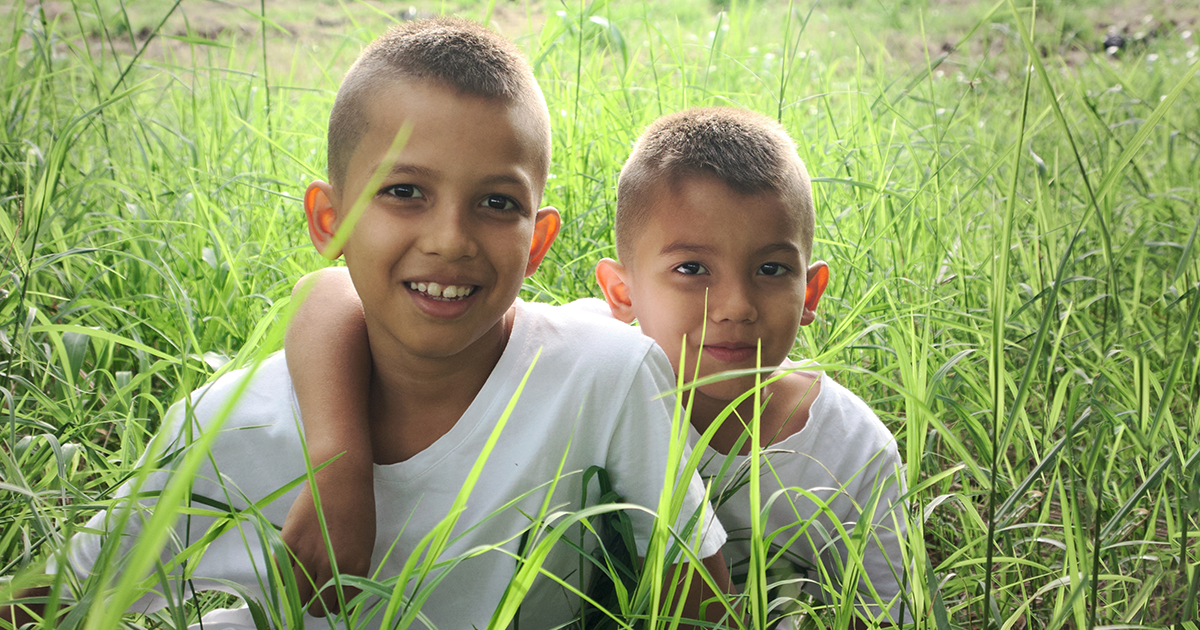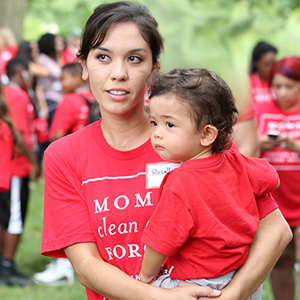This resource has been factchecked by policy experts, using the latest scientific research. Find all our sources linked below.
What are tick-borne illnesses?
Tick-borne illnesses are diseases that can be transmitted to humans through bites from ticks. The most common tick-borne illness in the United States is Lyme disease, which is transmitted to humans through bites from blacklegged ticks (also called deer ticks).1 Other tick-borne diseases in the US include anaplasmosis, ehrlichiosis, Rocky Mountain spotted fever, babesiosis, Colorado tick fever, tularemia, Powassan virus, and alpha-gal syndrome, which is a food allergy to red meat.2, 3, 4

How is climate change impacting Lyme disease and other tick-borne illnesses?
Climate warming is making some parts of the world, including much of the US, more habitable for disease-carrying insects like ticks. Ticks are most active any time the temperature is above 45°F, and climate change is increasing these warmer days.5 As the geographical range for ticks expands, tick-borne illnesses are rising.6

How are tick-borne illnesses diagnosed and treated?
A diagnosis for tick-borne illnesses usually comes from a blood test for antibodies. Lyme disease and other tick-borne illnesses are generally treated with antibiotics, which are especially effective if given soon after infection. Early treatment of tick-borne illnesses is key to preventing more severe disease progression and/or lingering symptoms of disease.
Who is most vulnerable?
People who spend a lot of time outdoors working, playing, camping, or hiking in grassy or wooded areas are most vulnerable to tick-borne illnesses. Lyme is most common in children aged 5-9 and adults aged 50-75.7 People who are older, have weakened immune systems, and/or don’t receive timely treatment are at higher risk of severe disease from tick-borne illnesses.

Lyme Disease
Lyme disease accounts for 82% of all tick-borne illnesses in the US.8 According to the EPA, cases of Lyme disease in the US have nearly doubled since 1991, with much of the increase in cases occurring in New England.9 Research suggests that in the northeastern US, the number of counties reporting a high incidence of Lyme disease has increased by over 300% in recent decades.10 Approximately 30,000 cases of Lyme disease are reported to the CDC each year,11 though experts think that the actual number of cases could be up to 10 times higher.12
Usually caused by a bacteria called Borrelia burgdorferi, Lyme disease occurs when ticks become infected with B. burgdorferi after feeding on infected animals, such as squirrels, mice, or deer, and then spread the bacteria to humans. Depending on the location, up to 50% of the ticks in an area may be infected with the bacteria that causes Lyme.13
Important tick-borne illnesses
The following are the five most common tick-borne diseases in the US.14 A tick can carry more than one disease—these are called co-infections.15 Asymptomatic infection is possible for each of these diseases.
LYME DISEASE16
Endemic area: Throughout the US, but concentrated in New England, the mid-Atlantic, northern midwestern states, and parts of the West Coast (especially California)
Early symptoms: Rash (often classic “bulls-eye” shape), flu-like symptoms (fever, chills, headache, fatigue, aches)
Late-stage illness: Severe headaches and neck stiffness; joint pain; heart palpitations or irregular heartbeat; neurologic symptoms, like nerve pain; dizziness or shortness of breath
ANAPLASMOSIS17
Endemic area: Concentrated in the northeastern and midwestern US, but also on the West Coast
Early symptoms: Flu-like symptoms
Late-stage illness: Respiratory failure; organ failure; bleeding problems; death
EHRLICHIOSIS18
Endemic area: Southeastern and south-central United States, from the East Coast extending westward to Texas
Early symptoms: Flu-like symptoms; confusion or changes in mental state; rash
Late-stage illness: Damage to brain or nervous system; respiratory failure; organ failure; bleeding problems; death
ROCKY MOUNTAIN SPOTTED FEVER (RMSF)19
Endemic area: Throughout the US, but most commonly reported in North Carolina, Tennessee, Missouri, Arkansas, and Oklahoma
Early symptoms: Flu-like symptoms
Long-term health problems: RMSF does not cause chronic infections, but may cause permanent damage like injury to blood vessels leading to amputation of limbs, fingers, or toes; hearing loss; paralysis; or mental disability
BABESIOSIS20
Endemic area: Most common in the Northeast, upper Midwest, and West Coast
Early symptoms: Flu-like symptoms
Disease complications: Hemolytic anemia; low or unstable blood pressure; organ failure; death

How can I protect my family?
Preventing tick bites and removing attached ticks early is key to preventing Lyme disease and other tick-borne illnesses.
Ticks are very small and can be difficult to spot. This means that they can sometimes feed on humans for a long time before they are noticed, which allows them to transmit the disease-causing bacteria through their saliva into a human’s bloodstream. Typically, it takes 36-48 hours for the bacteria to move from a tick’s gut into a human.
Prevention strategies include:21
- Regular tick checks for after outdoor activity, paying careful attention to the scalp, groin, and armpits.
- Wearing protective clothing when engaging in outdoor activity in grassy, wooded areas (such as long pants, long sleeved shirts, and hats).
- Avoiding contact with ticks by walking in the center of trails in wooded areas and avoiding wooded areas with tall grass and leaf litter.
- Using bug spray. EPA has a tool for finding the right insect repellant for you and your family. Active ingredients vary from natural oils to synthetic agents: www.epa.gov/insect-repellents/find-repellent-right-you
To learn more about preventing tick bites, Lyme disease, and other tick-borne illnesses, visit the CDC website: www.cdc.gov/ticks/tickbornediseases/index.html
Full list of sources.
Released: May 2023




